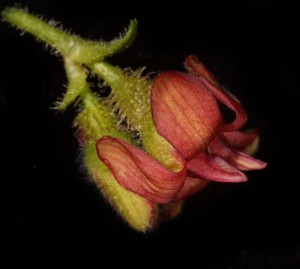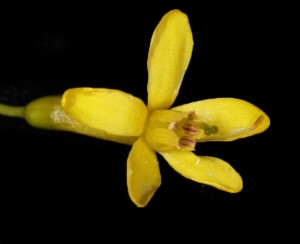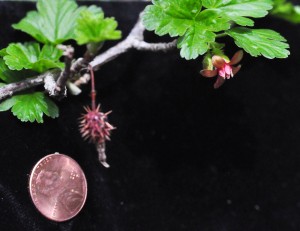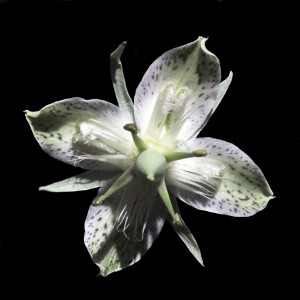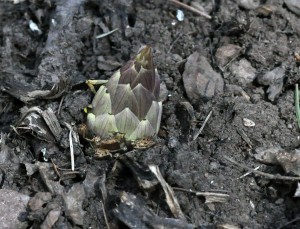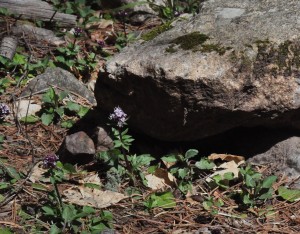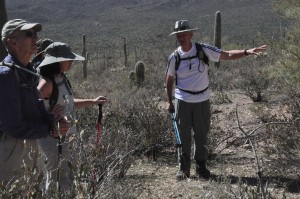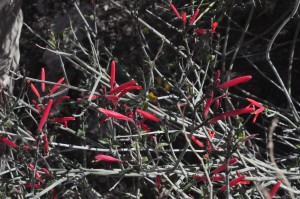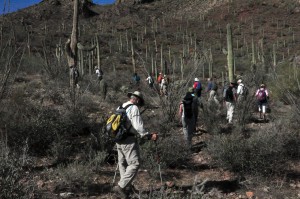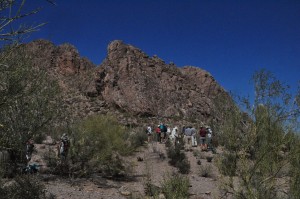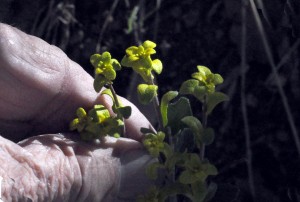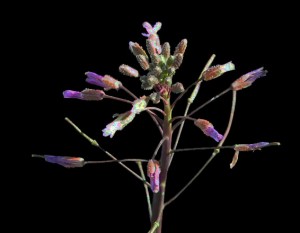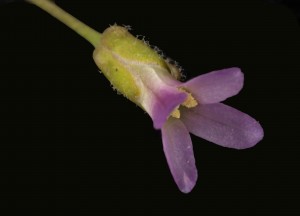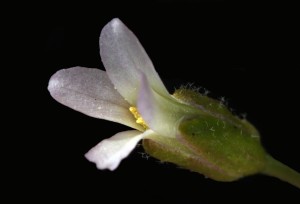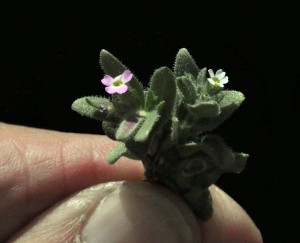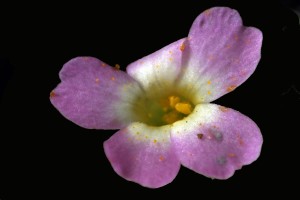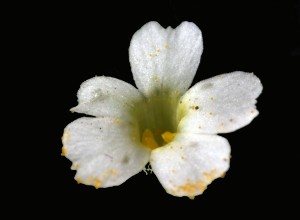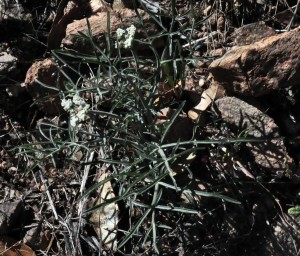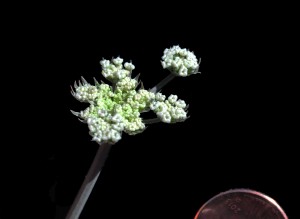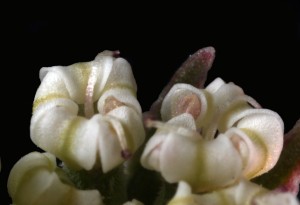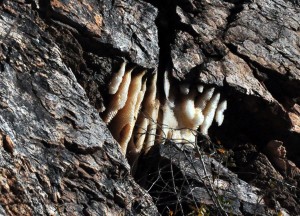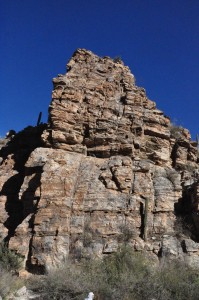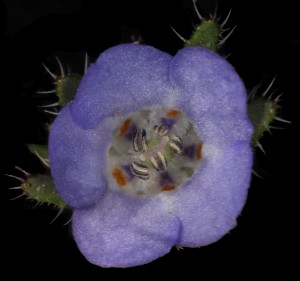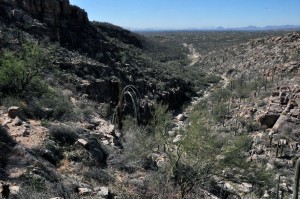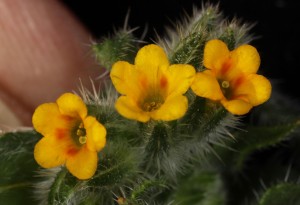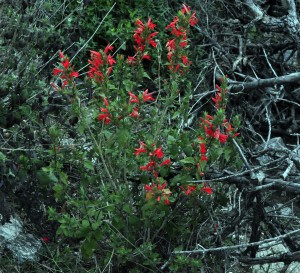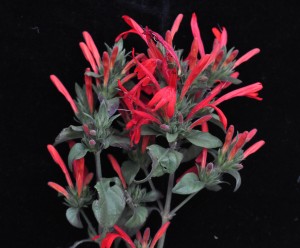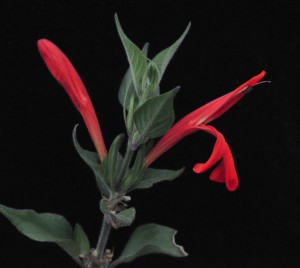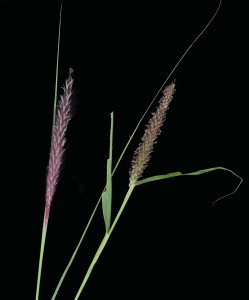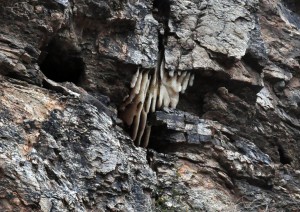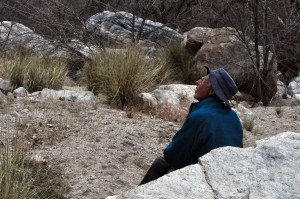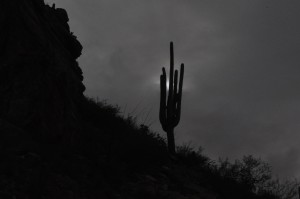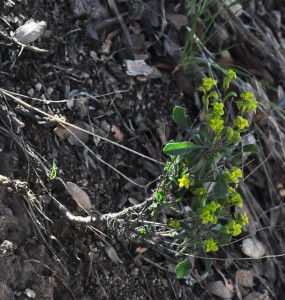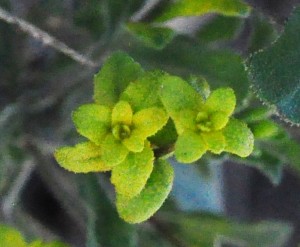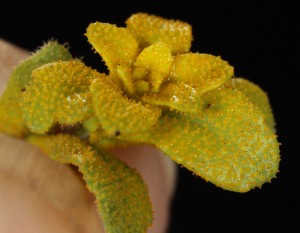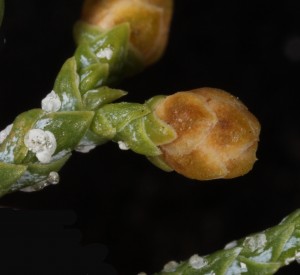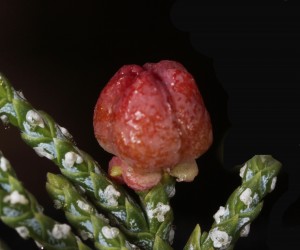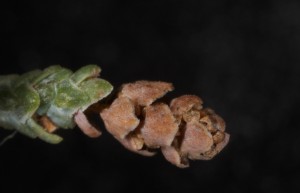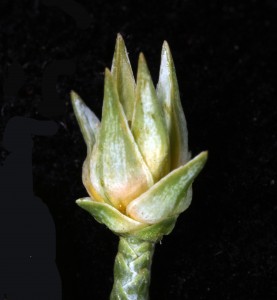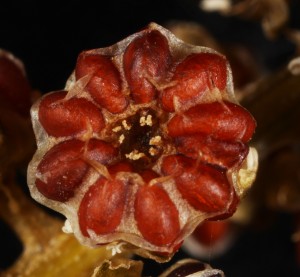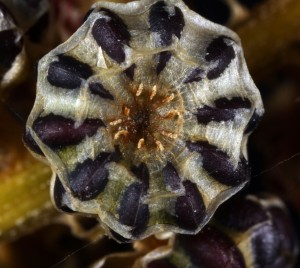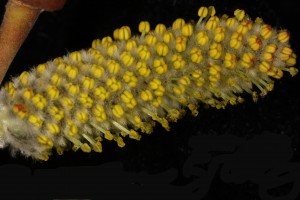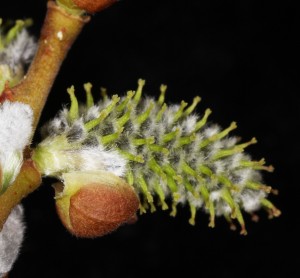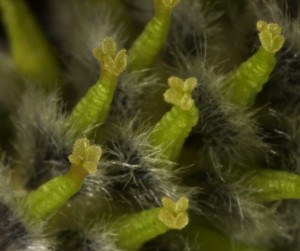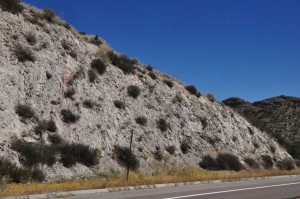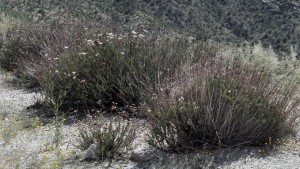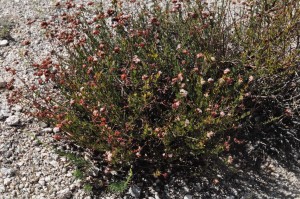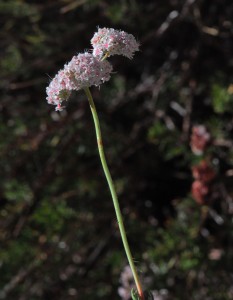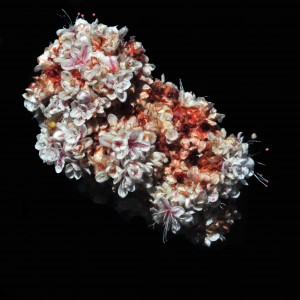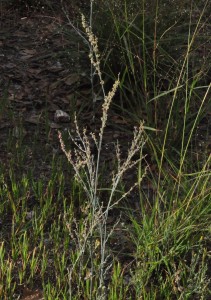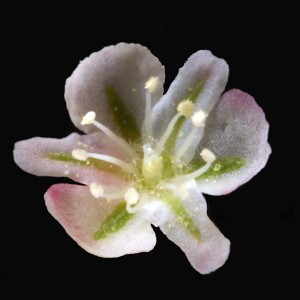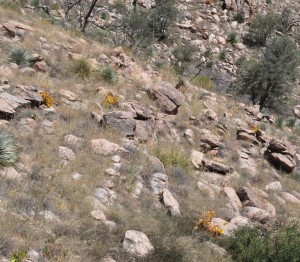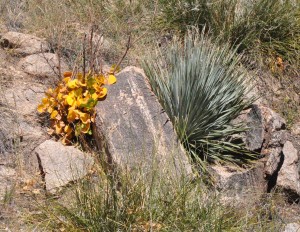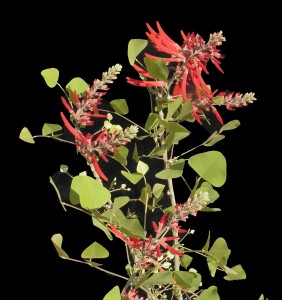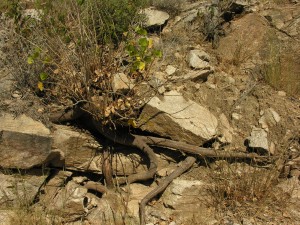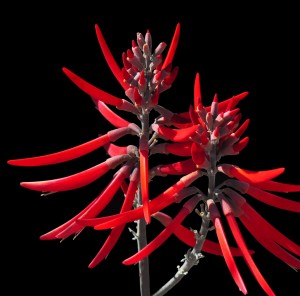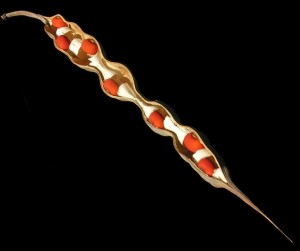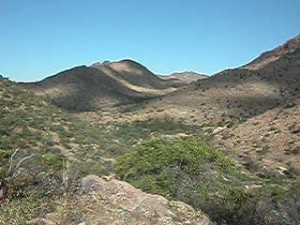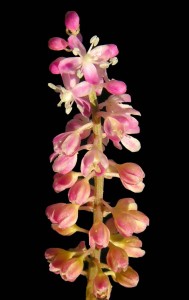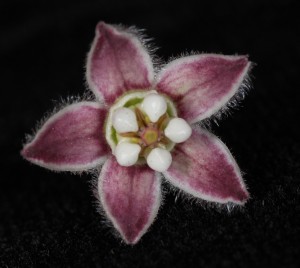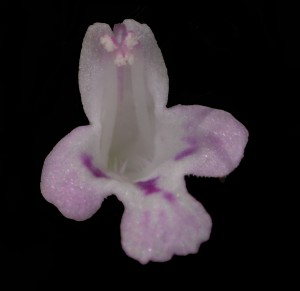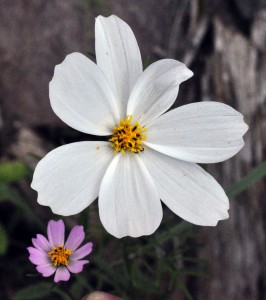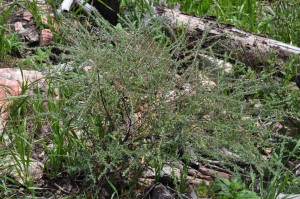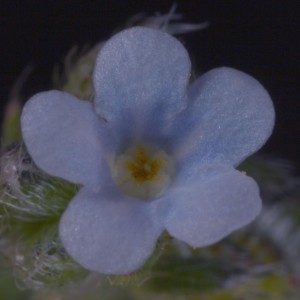Last Wednesday Dave delivered my new computer. It has been over three weeks since I let go of the old one. Most of that time I have spent trying to get over a heavy cough and cold, which meant that I was not getting out into nature the way I love to do. Sorry about the long gap between postings.
At the end of January (Jan 29) I reported finding a fungus (Puccinia monoica) that invaded a plant, Rock-cress (Boechera perennans), changed its growth pattern and made the leaves look like flowers. Yesterday Ed and I went to visit the infected plant to see how it was doing. Though it looks a little the worse for wear, you can see in the photograph that the growth pattern is still the same and the fungus is still turning the leaves on the tip of the plant yellow so that they look like flowers (on a plant that has pink and white flowers.) The other Rock-cress plants nearby have mostly finished blooming and have gone to seed. This fungus has been at work pretending to be a yellow flower for at least ten weeks.
The infected plant is projecting out from a steep bank
Some of the many dandelions in bloom
We drove up the mountain to Turkey Run. It is still very early in the season and there are not many plants in bloom. We did see a healthy crop of dandelion. Later we found the orange gooseberry in bloom (Ribes pinetorum). For several years I tried to photograph this plant, but was too late. Here it is, blooming in April. On the way down the mountain we found its cousin, Golden currant, (Ribes aureum) in full bloom.
Orange gooseberry flower. It begins red and turns white with age
The Golden currant flower
Orange gooseberry with flower, last year’s fruit (out of focus) and a penny for scaled
One of my favorite flowers on the mountain is the Green gentian or Deer’s ears (Swertia radiata). It produces a crop of very large floppy leaves each year for many years. In its final year, the leaf pattern is different as it sends up a flowering stalk which can be as high as 8 feet (as in this photograph). The stalk has hundreds if not thousands of pale green flowers. After it produces fruit, the plant dies. This means that it is monocarpic, meaning that it only flowers once in its life. 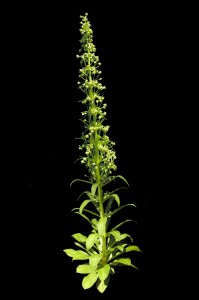
An eight foot tall blooming Green gentian
An individual Green Gentian flower
New Green gentian growth
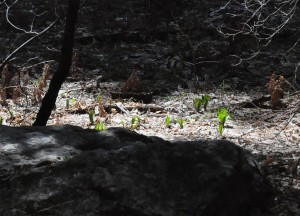 Ed and I saw some Gentian plants with last year’s foliage all dried up and in the center, new growth. Within the next few weeks we will see if any of these will send up a flowering stalk. Last year there were very few that flowered, but lots of foliage.
Ed and I saw some Gentian plants with last year’s foliage all dried up and in the center, new growth. Within the next few weeks we will see if any of these will send up a flowering stalk. Last year there were very few that flowered, but lots of foliage.
Hillside with a number of Green gentian plants (we found 26 in the area)
We enjoyed seeing Arizona Valerian (Valeriana arizonica). This genus is known as a medicinal plant, acting as a sedative. These bloom early in the Spring where in some damp places high in the mountain they carpet the forest floor.
An Arizona Valerian near a rock
A cluster of valerian flowers with lavender tubes and white flowers.
This week end (April 12 and 13), I am participating in the Tucson Open Studio tour. Our home will be open from 11 am to 5 pm on Saturday and Sunday. Come on over. (9233 E Helen St.)



